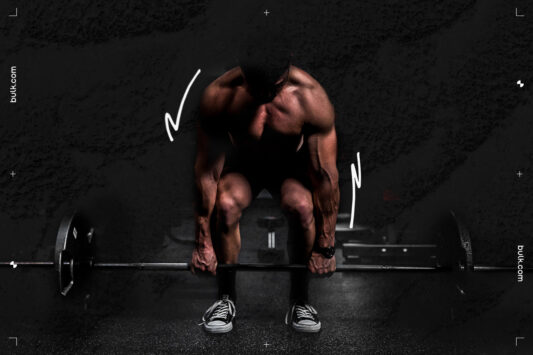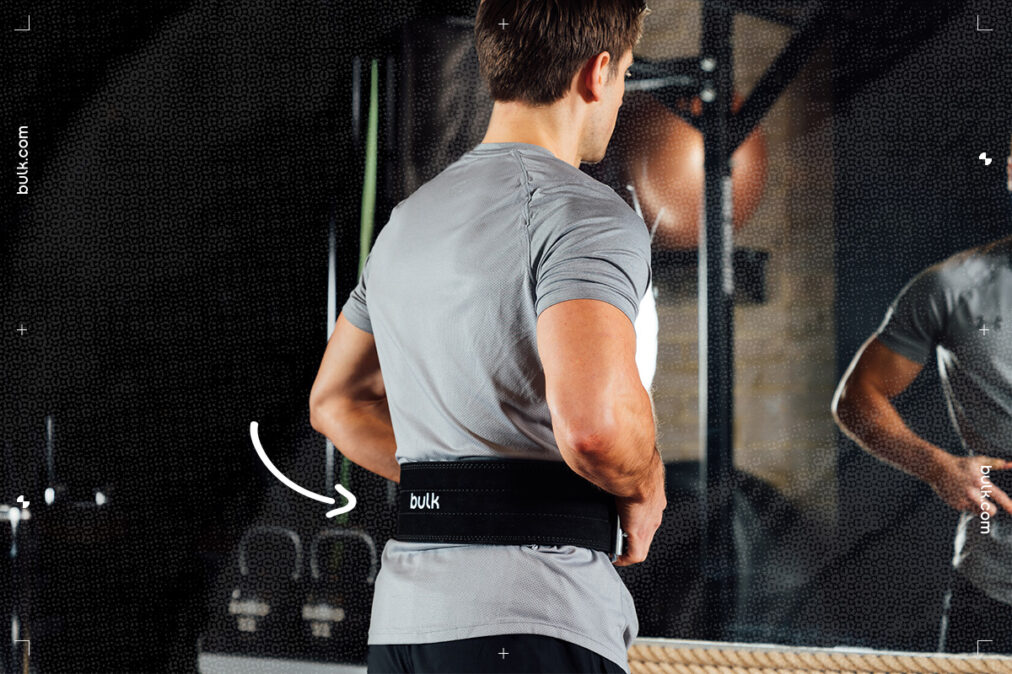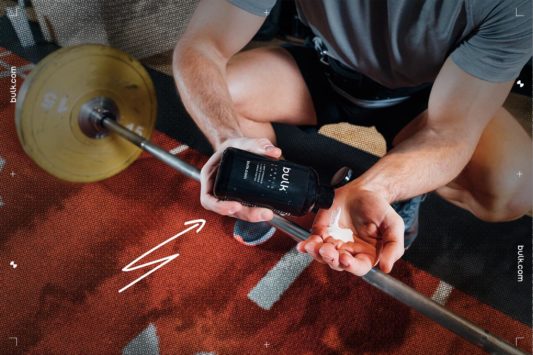Thinking about getting a weightlifting belt? Here we explain what a belt does, when to use one and how to wear one. Whether you’re an expert looking to learn more about the benefits of weightlifting belts, or a novice learning the basics, you’ll find this article useful.
What does a weightlifting belt do?
The short answer: weightlifting belts are designed to prevent injury and improve performance. They do this by reducing stress on the lower back while the person is lifting in an upright position, or preventing hyperextension during overhead lifts. Stabilising the back not only reduces the risk of injury, but improves the intensity and volume of weight you can lift too.
Stabilises spine
Lifting belts increase intra-abdominal pressure (IAP), or bracing, to help stabilise your spine when lifting heavy loads. IAP is the amount of pressure that is generated inside the abdominal cavity. This is what bracing does – fills your stomach with pressure.
But the belt doesn’t do all the work for you. All lifters need to learn how to brace their spine in order to stabilise it during heavy lifts.
Minimises lumbar extension
With a combination of stabilising the spine and minimising lumbar extension, a weightlifting belt means you are less likely to overextend. This reduces the risk of injury and is the main reason they are compulsory in IPPF Powerlifting meets.
In combination with proper bracing, belts take some of the load off your lower back. However, wearing a weightlifting belt should not be relied on as the only protection against back injury. Learning proper lifting techniques and performing exercises with appropriate load are the best primary interventions to prevent injury.
Improves performance
Stabilisation and bracing improve the amount of weight you can lift in each set. With proper bracing too, belts maximise the load you lift [1]. It gives your back and extra layer of support, allowing you to push the boundaries in high-intensity lifts. In other words, you can lift as heavy as possible without having to worry about your back becoming a limiting factor.
When to use a lifting belt
You should use a lifting belt on certain heavy powerlifting lifts. These are squat and deadlift, alongside variations. You could also use it for a heavy overhead press or push press.
A study on the effectiveness of weightlifting belts during squats found that using a belt can aid in increasing intra-abdominal pressure (IAP), thereby supporting the trunk [2].

When to not use a lifting belt
It’s a good idea not to become over-reliant on your belt. This doesn’t mean you can’t use it during your warm-up sets, it just means you should do one or two sets without them. The same goes for other ergogenic aids such as lifting straps or wrist wraps. You want your body to naturally adapt. Use the belt as a way to enhance your lifts further.
You may sometimes see someone using a belt during a bench press. This is not necessary and may even negatively impact form. The lifting belt should only be used during movements such as squats, deadlifts and overhead presses – heavy movements where your back is upright and unstable.
How to wear a weightlifting belt
It’s not a case of just wearing the belt. You need to use the belt. To be at one with it, thinking of it as an extension of your body. This is a skill that takes practice.
A lifting belt needs to be worn securely, but not too tightly. You need enough remove to brace. Along with that, it should fit your torso so that it can provide maximum support throughout your workouts and not cause you discomfort.
Place the belt around your waist, just above your hips and around your abdominals. Next, take a deep breath in, and tighten the belt. Breathe out and test the comfort. The main protection for your back is your core, so you need to be able to tighten and expand your stomach, even when wearing the belt.
Factors to consider when choosing a weightlifting belt
Material
There are two types of materials used for belts. Nylon lifting belts and leather lifting belts. Thicker belts are more suitable for heavy lifts like squats and adults, with little dynamic movement. Exercises like the clean and jerk require a belt that is more flexible.
Quality
As a beginner, a high-grade belt may not be necessary, as there are designs to stabilise those super heavy lifts. You can get hold of a good quality belt for reasonable prices.
If you’re a competitive powerlifter, you’re going to want to look at the best available from brands like SBD. We offer a good selection of belts, with a lever lifting belt offering a mid-range option for serious lifters and a Nylon Belt for beginners.
IPF approved
Being approved by the International Powerlifting Federation (IPF) means you can be sure your belt is eligible for competition. You don’t want to get used to training with a certain piece of equipment and then later find out it is not eligible for competition. It could throw off your performance on meet day.
Convenience
Buckle belts can be difficult to take off and on. For this reason, a Lever Belt was invented. It allows you to simply click off and loosen the belt with one click. There are also velcro belts, which are ideal for beginners.
Frequently asked questions
Do you really need a weightlifting belt?
Yes, if you want to lift the heaviest weights you can. Equipment is needed to maximise our training and improve our performance.
When should you start wearing a lifting belt?
The general rule is that when a lifter can squat their body weight or deadlift 1.5 times their body weight, they should start using a belt. Those with a weaker core may need to start using one earlier.
Do you need a belt to deadlift?
While a lifting belt can no doubt improve the training stimulus and safety of the deadlift exercise, it is still entirely possible to perform said deadlift without the use of any additional fitness equipment, so long as proper form and an appropriate amount of weight are used.
However, when you begin to lift weights that surpass 1.5x your body weight, it’s a wise decision to start using a weightlifting belt.
Should you wear a belt when squatting?
Yes, research states that a lifting belt can help you squat 5-15% more weight. Also, wearing a belt for squats can reduce shear forces on the spine, which decreases your chance of injury. Start using a belt when you lift 1.5x your body weight.
Related articles
Eager to learn more? We believe that every person, with support, has the right to transform their lives through fitness. That’s why we’ve put together hundreds of articles with expert advice. From what does a weightlifting belt do to how to use lifting straps, we’re passionate about helping you through your fitness journey.
How to use lifting straps Best gym and training accessories
How to use wrist wraps Leg day exercises
Advanced fitness training methods What do knee sleeves do?
Why is good gym clothing important? Why should you use kettlebells?
How can knee wraps support your lifting?
Bench press muscles worked











